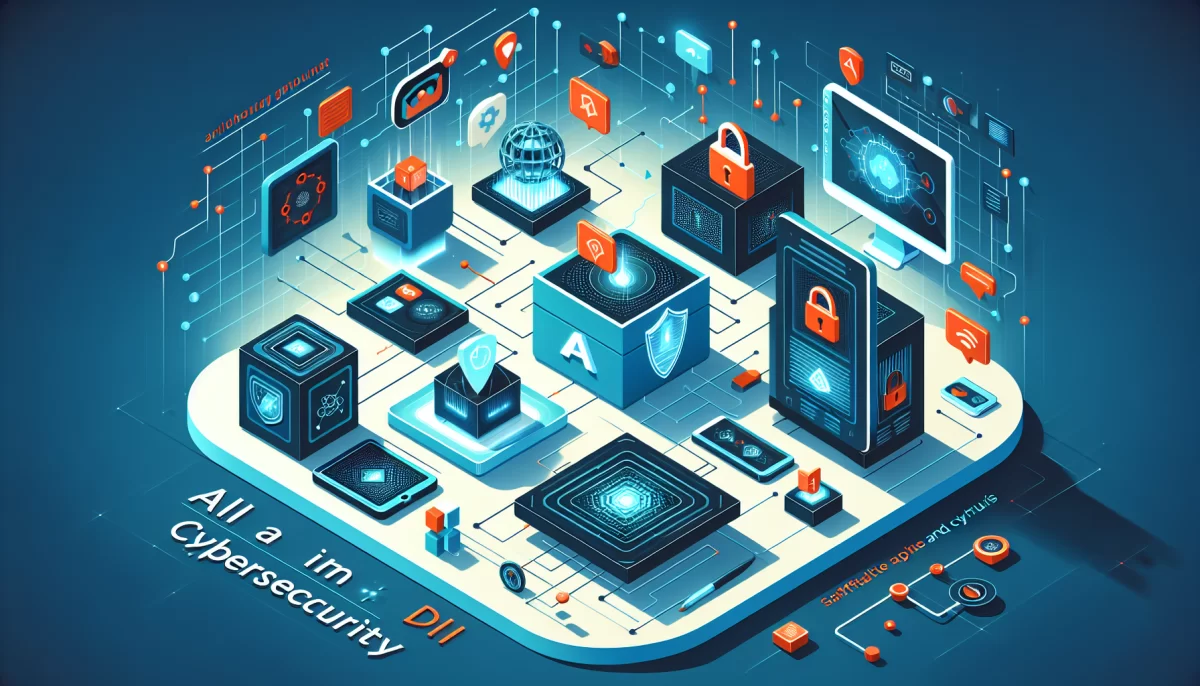AI in Cybersecurity: Safeguard Uptime Against DDoS and Cyber Threats
Imagine your customers trying to access your website, only to encounter slow loading times or unresponsive pages. This scenario is more than just a poor user experience—it’s a threat to your business’s revenue, reputation, and customer trust. In today’s digital landscape, ensuring uptime is critical, but cybercriminals continually evolve, launching sophisticated attacks such as distributed denial of service (DDoS) assaults that can cripple online services.
Fortunately, artificial intelligence (AI) is revolutionizing cybersecurity by providing intelligent, adaptive defenses that protect uptime from these complex threats. Despite attackers also leveraging AI to enhance their tactics, AI-powered cybersecurity solutions enable organizations to stay a step ahead by identifying, mitigating, and preventing attacks faster and more efficiently than traditional methods.
Understanding AI in Cybersecurity and Key Threats to Uptime
AI in cybersecurity is fundamentally transforming security strategies. Unlike conventional signature-based or rule-driven systems, AI utilizes machine learning algorithms to analyze vast amounts of data in real-time, learning from patterns and anomalies to detect emerging threats. This continuous learning capability makes AI highly effective at spotting attacks that evade traditional defenses.
- Real-time Traffic Monitoring: AI monitors network activity continuously, identifying unusual spikes in traffic indicative of DDoS attacks or other malicious behaviors.
- Adaptive Threat Detection: By analyzing behavioral patterns, AI can detect malware, phishing attempts, and unauthorized access efforts early.
- Automated Mitigation: AI can autonomously respond to threats, blocking malicious traffic immediately to maintain uptime.
According to a 2023 report by IBM’s X-Force Threat Intelligence Index, DDoS attacks increased by 15% year-over-year and continue to be a top cause of downtime, costing businesses an average of $5,600 per minute in lost revenue (depending on industry).
AI-Powered Defense Against DDoS Attacks
DDoS attacks overwhelm networks with illegitimate traffic, denying service to genuine users. Traditional defenses can be slow to react or rely on static thresholds that attackers can bypass. AI changes the game with:
1. Real-Time Detection
AI engines learn to distinguish normal from abnormal traffic by analyzing vast volumes of data across networks. For example, Cloudflare leverages AI to protect millions of websites by instantly recognizing attack signatures and abnormal behaviors, triggering an immediate response.
2. Automated, Adaptive Response
Upon detecting suspicious activity, AI-based systems filter out harmful traffic autonomously, ensuring minimal impact on legitimate users. This automation reduces response times from minutes to milliseconds, greatly improving uptime.
3. Predictive Analytics for Proactive Defense
Advanced AI platforms like Google Cloud Armor employ predictive models that forecast attack likelihood based on historical data, enabling organizations to reinforce defenses before attacks occur.
Preventing Other Cyber Threats with AI
Beyond DDoS, AI enhances security against various cyber threats, including:
Malware Detection and Prevention
AI identifies malware by analyzing behavior rather than relying on known signatures. This is crucial as malware variants evolve rapidly to evade detection. Malicious software often exhibits anomalous process behaviors or communication patterns that AI can flag instantly.
Intrusion Detection and Unauthorized Access Prevention
Using user behavior analytics, AI models detect unusual login patterns or access attempts indicative of intrusions. For instance, Darktrace applies unsupervised learning to identify insider threats and external attacks in real-time, adapting to new patterns as threats evolve.
Phishing Threat Mitigation
With increasingly sophisticated phishing emails that mimic trusted communications, AI leverages natural language processing (NLP) to detect subtle linguistic cues and malicious intent, reducing the risk of data breaches caused by human error. Tools like Bitdefender Link Checker use AI to verify URLs before users click, preventing credential compromise and malware infections.
Endpoint Security Enhancement
AI continuously monitors IoT devices, workstations, and mobile endpoints, spotting and containing threats at their source to prevent lateral movement within networks.
Benefits of AI-Driven Cybersecurity Solutions
Incorporating AI into cybersecurity delivers numerous advantages:
- Real-Time Threat Detection and Response: Enables rapid mitigation of attacks, minimizing downtime and damage.
- Adaptive Learning: Systems improve continuously by learning from new attack strategies, reducing false positives.
- Scalability: AI handles extensive data volumes effortlessly, making it suitable for organizations of varying sizes.
- Improved Accuracy: Reduced false alarms allow security teams to focus on genuine threats.
Challenges in Deploying AI for Cybersecurity
Despite its benefits, AI integration poses challenges:
- Implementation Costs: High-quality AI systems require significant upfront investment in technology and expertise, which can be a barrier for small businesses.
- AI-Powered Attacks: Attackers increasingly use AI to enhance phishing and malware efficiency, necessitating constantly evolving defenses.
- Data Privacy Concerns: AI relies on large datasets, making compliance with data protection regulations essential to avoid legal risks.
- False Positives and User Accessibility: Incorrect threat identification might block legitimate users, requiring ongoing system tuning to balance security and usability.
The Future of AI in Cybersecurity and Uptime Protection
The future promises deeper AI integration, with autonomous security operations centers (SOCs) managing threat detection and response with minimal human intervention. Advances in explainable AI (XAI) will offer greater transparency into AI decisions, increasing trust and compliance. Additionally, democratization of AI tools will empower smaller businesses to utilize advanced cybersecurity capabilities previously accessible only to large enterprises.
Collaboration in shared innovation spaces, such as makerspaces, promises to accelerate the development of new AI-driven security technologies tailored for emerging threats.
Conclusion
Maintaining website and service uptime amidst growing cyber threats requires leveraging AI in cybersecurity. By applying AI-powered detection, automated response, and predictive analytics, organizations can effectively counter DDoS attacks and a broad spectrum of cyber threats with greater speed and precision than traditional methods.
While challenges such as costs and privacy must be managed, the benefits of AI-driven cybersecurity—enhanced uptime, reduced downtime costs, and improved resilience—are indispensable in today’s cyber risk landscape. Continuous adoption and advancement of AI tools will be crucial for businesses to protect their digital assets and maintain operational stability in an ever-evolving threat environment.
Key Takeaways:
- AI continuously learns and adapts, providing superior threat detection over static security systems.
- Real-time AI responses drastically reduce downtime from DDoS and other cyberattacks.
- AI enhances defenses against malware, phishing, intrusion, and endpoint threats.
- Balancing effective AI deployment with privacy and cost concerns is critical.
- The future of cybersecurity heavily depends on advanced AI integration and collaboration.
Embracing AI in cybersecurity is no longer optional but essential for securing uptime and sustaining business operations against increasingly sophisticated cyber threats.



